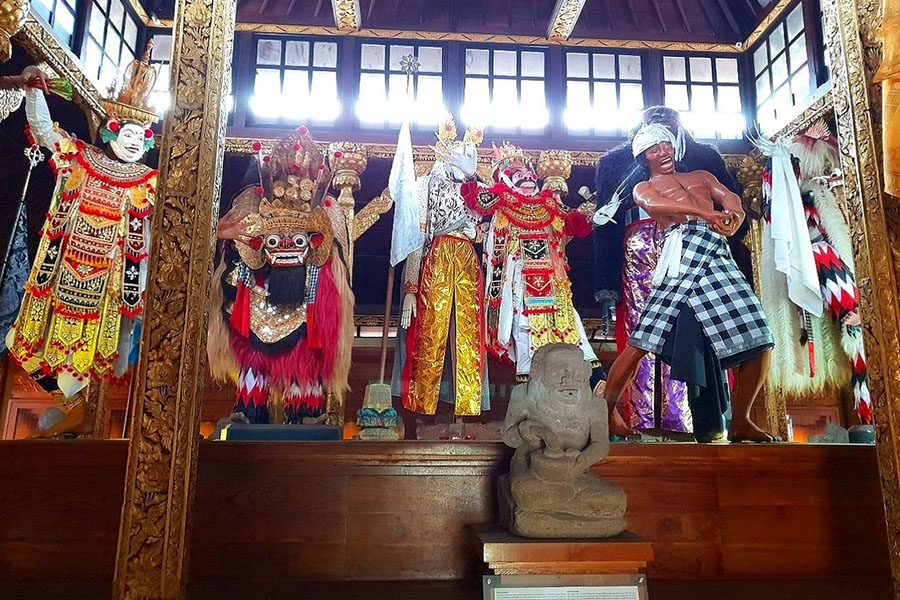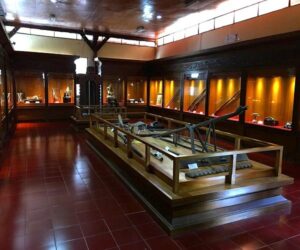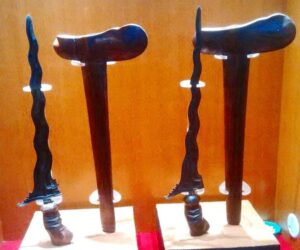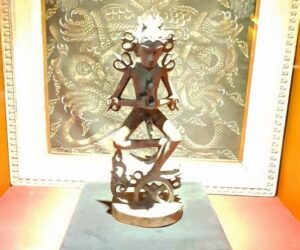BALI MUSEUM
BALI MUSEUM IS THE HERITAGE BALINESE MUSEUM FOR MAINTAINING AND PRESERVING THE HISTORY OF BALINESE CULTURE IN THE PAST

Bali Museum is strategically located on Mayor Wisnu Street, Denpasar, Bali, and is very easy to find due to its location in the city center. To the north is the majestic Jagatnatha Temple, while in front are the Puputan Badung (Badung Courtyard) and the Catur Muka Statue. The development of the Bali Museum began with the urge to safeguard, preserve, and care for Bali’s important cultural heritage. It was triggered by concerns about cultural erosion that could see the heritage disappear completely, remaining only in the form of photographs and documentation. At Bali Museum, visitors can have a fascinating experience in understanding the life and culture of Balinese people in the past. Enjoy comprehensive information about Bali from the past to the present when visiting the Bali Museum.
If you visit Bali Museum, here’s what you need to know:
- Bali Museum Location
- Bali Museum History
- Noble Purpose of Bali Museum
- Bali Museum Geography
- What You Can See at Bali Museum
- Facilities at Bali Museum
Bali Museum Location
The Bali Museum is located in the center of Denpasar, amidst the hustle and bustle of social activities typical of the city center, adjacent to Jagatnatha Temple, which is a place of public worship for the Balinese people, and also close to the Puputan Badung Field, which is a favorite recreation area for Denpasar residents. It is not difficult to find Bali Museum, as it can be accessed via Google Maps, which makes it one of the most popular museum destinations in Denpasar. If you have difficulty finding the location of this museum, you can use the Hire Car and Driver service provided by Bali Driver Hire, which includes visiting Bali Museum and other interesting tourist destinations around Denpasar city. With affordable prices and satisfying services, a trip to the Bali Museum will be a very pleasant experience. This is a rare opportunity to learn about the uniqueness and beauty of tourist destinations in the city of Denpasar.
Bali Museum History
On April 28th, 1908, the Kingdom of Klungkung fell to the Dutch colonialists, marking the beginning of Dutch colonial rule in Bali. This event changed the dynamics of government in Bali from being somewhat closed to foreigners to being more open to Europeans, especially the Dutch, during the European colonial period in Indonesia. This led to an increase in foreign visits to Bali, including those who brought Balinese souvenirs back to their countries. This situation threatened Bali’s cultural heritage, so Dutch scientists, culturalists, and artists sought to protect and preserve Bali’s cultural heritage.
The idea of establishing a Bali Museum was first proposed by architect W.F.J. Kroon (1909-1913), who also served as an assistant resident of southern Bali in Denpasar. In 1910, the idea was realized with the construction of the Arca Building. The construction of the Bali Museum was carried out by architects I Gusti Gede Putu Kandel from Banjar Abasan and I Gusti Ketut Rai from Banjar Belong, together with German architect Curt Grundler, with financial and material support from the Kings of Buleleng, Tabanan, Badung, and Karangasem. In 1930, efforts to complete the ethnographic treasury were continued by the then Chairman of the Antiquities Committee, W.F. Stturterhim. To facilitate the management of the museum, a foundation was formed in the same year, led by H.R. Ha’ak and its members. In 1932, the Bali Museum was opened to the public as a repository of human historical and ethnographic relics, including collections of living tools, art, religion, written language, and others that reflect the life and development of Balinese culture in the past.
Noble Purpose of Bali Museum
The main purpose of building the Bali Museum is to maintain and preserve the history and culture of Bali from the past. In this ever-evolving era, the importance of preserving the discoveries and stories of the past is highly emphasized. This is so that future generations of Balinese will still have access to the history and heritage of their ancestors to cherish and learn from. The process of building the Bali Museum began with the realization of the importance of preserving, caring for, and conserving Bali’s cultural heritage. The initiative was born out of concern over the possibility of cultural erosion that could result in the extinction of cultural heritage, leaving only traces in the form of photos. By establishing Bali Museum, efforts to save Bali’s cultural heritage are being taken seriously. This is a very noble goal, because in the midst of advancing times, maintaining identity as a Balinese and preserving ancestral heritage are very important. Bali Island is famous for its local wisdom, customs, and various traditions that need to be preserved as an inseparable part of Indonesia’s cultural heritage.



Bali Museum Geography
The museum building is designed in the typical style of a castle or kingdom in Denpasar and has a complex pavilion depicting the various districts on Bali Island. By visiting one of the Denpasar places of interest, the Bali Museum, you can see a variety of historical relics from each district, each with its own uniqueness and beauty. This will broaden your knowledge, as you can learn about the history of Bali Island all in one place. This museum is perfect for students who want to increase their knowledge about Bali. Here is an overview of the geography of Bali Museum:
- Tabanan Pavilion: Located in the north of Bali Museum, it holds various collections, such as dance equipment, dance costumes, various types of masks for dance performances, shadow puppets, keris for Calonarang, and some ancient statues from ancient times in Tabanan Regency.
- Buleleng Pavilion: Located in the center of a North Balinese temple-style building, the pavilion houses various collections, including Balinese clothing from Buleleng, traditional fans made in Buleleng in the past, as well as several other important relics found in the area.
- Badung Pavilion: Located at the entrance with a tall bale kulkul, this pavilion houses various prehistoric collections used by humans during the hunting, farming, and metal periods of the past. In addition, the pavilion also exhibits a collection of Balinese fine arts.
- Karangasem Pavilion: Located in the east, this pavilion houses depictions of traditional building art from the eastern part of Bali. Inside, there are several exhibits of paintings, fine arts, archaeology, and pre-historic relics that are rich in history.
The Bali Museum has a building area of about 2600 square meters with three different courtyards, namely the outer courtyard (jaba), the middle courtyard (jaba Tengah), and the inner courtyard (jeroan), which is limited by a wall and gate. This gate is known as Candi Bentar and Candi Kurung, and it serves as the main entrance. In addition, there is also a Balai Kulkul (wooden bell) located to the south of the Central Jaba. In the northwest corner, there is Bale Bengong, which, during the royal period, was used as a place for the king’s family to rest while observing the atmosphere outside the palace. The museum is also equipped with Beji, a bathhouse for the royal family located in front of the Tabanan Building. The palm fiber roof is only used for the roof of the temple building inside the Bali Museum complex.
What You Can See at Bali Museum
As one of the leading museums in Denpasar, the Bali Museum offers a complete experience in understanding the island’s unique history and culture. The collection includes several artifacts from ancient civilizations in Bali, providing a complete insight into the rich culture of this beloved island. The museum’s collection includes various types of ancient objects and tools, ranging from prehistoric artifacts such as tombstones (sarcophagus), collections of objects from historical periods such as Stupika clay containing the mantra “Ye te”, bronze statues (Arca Perunggu), and ethnographic objects such as krises, Endek cloth, religious ceremonial equipment, and Sidakarya masks. The collection can be categorized into prehistoric artifacts such as the Petrified Tomb (sarcophagus), artifacts from the historical period such as the Stupika clay with the mantra “Ye Te”, bronze statues (Hindu and Buddhist statues), and a collection of ethnographic objects such as Keris and Endek cloth, as well as religious ceremonial paraphernalia such as Sangku, Cecepan, and Sidakarya Mask, along with some other unique collections. This is a great place for those who are interested in history and want to delve into the development of Bali from the past to the present and understand how its culture and people’s lives have evolved over time.
Facilities at Bali Museum
The facilities available at Bali Museum are very complete, so it will provide a fun and comfortable visiting experience for visitors. A good layout makes for a pleasant visiting atmosphere. The large parking lot around the Puputan Badung field means you don’t have to worry about finding a parking space. You can also buy drinks and snacks from the vendors if you are thirsty or want to rest at Puputan Field while enjoying the social activities of the surrounding community. Puputan Field is often used as a place for jogging and recreation. Inside the Bali Museum, there are clean and comfortable restrooms for visitors, so you don’t have to worry about these facilities. All these facilities support the comfort of visitors, making a visit to the Bali Museum more enjoyable. In addition, this experience can also enhance your understanding of the history and traditional culture of Bali, which is rich in its uniqueness and diversity of customs.

